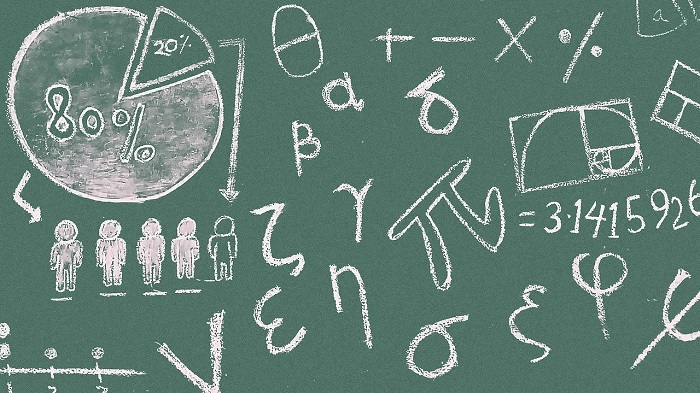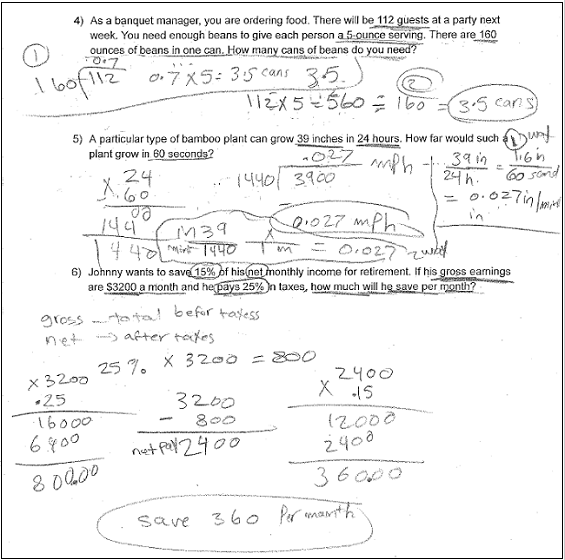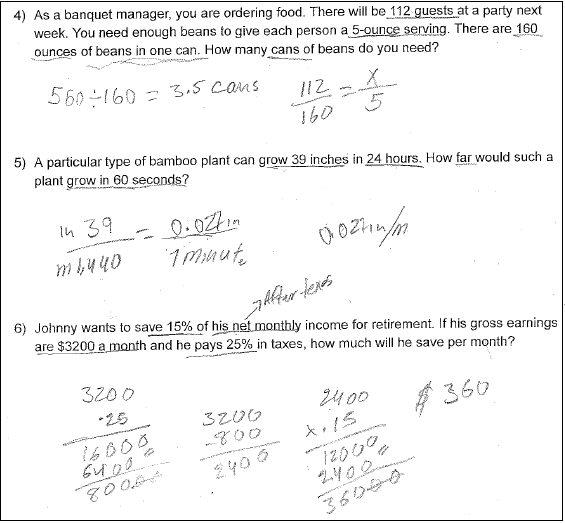- MN ABE Connect
- Archive
- ELA + Math = ? (Part 3 of 3)
 April 10, 2018
April 10, 2018
ELA + Math = ? (Part 3 of 3)
Danielle Legault, InstructorHow can all ABE teachers help their students solve math problems? Can we use simple strategies that we may already know from teaching reading? Yes we can!
In this third article on using CCRS (College & Career Readiness Standards) reading strategies to solve math problems, we will explore the connection between reading and math more closely. In the first MN ABE Connect article on March 12, Patsy Egan explained the rationale, the connection between ELA and math strategies in the CCRS, the 7-step process and gave some examples of student work. In the second article on March 26, Lindsey Cermak provided more examples and shared benefits as well as student feedback on the process. Below are the reading strategies and math practices stated in the first two articles:
- ELA Reading Anchor 1: Read closely to determine what the text says. (The essence of any math word problem!)
- ELA Reading Anchor 7: Integrate & evaluate content presented in diverse media formats, including visually and quantitatively, as well as in words. (Dealing with numbers and words together…that’s math word problems in a nutshell!)
- Math Practice 1: Make sense of problems and persevere in solving them. (The steps offer a ‘way into’ a difficult problem.)
- Math Practice 3: Construct viable arguments and critique the reasoning of others. (Hurrah for math conversations!)
In addition to incorporating reading strategies, the 7-step procedure helps teachers and students alike dig deeper into the conceptual understanding of problems, a crucial step in knowing what needs to be done before solving a problem. Conceptual understanding is a key component of rigor, one of the three CCRS math shifts. Why is this important? Having deep knowledge of what a problem is asking us to do is essential for both teachers and students. As Lynda Ginsburg, one of the national leaders in the field of ABE math, states:
Some adult education teachers may not feel prepared to help learners develop conceptual understanding because they may not have that understanding themselves. Many adult educators teach all subjects to their learners and feel more confident and competent developing literacy skills. (Ginsburg, 2017, p. 58)
We believe that using the 7 steps of close reading process helps students to deepen their conceptual understanding of the math at hand and works to improve their readings skills as well!
The 7 close reading steps are:
- PUT DOWN your pencil! Read the story problem for gist.
- Retell the story problem in your own words. Do you understand what it’s asking you to do? Can you draw a picture/sketch?
- Pick up your pencil. Read it again. Underline the QUESTION. What is being asked of you? The main idea is usually the question!
- Now circle words or numbers that you think are IMPORTANT.
- Next, cross out information that doesn’t matter. DECLUTTER the word problem!
- Tell a classmate what you’ve circled and crossed out, and why. JUSTIFY your reasoning.
- Use your math strategies to SOLVE!
This simple close reading process can be used whether you teach a stand alone math class, several subjects, or numeracy in an ELL classroom. The idea of spending more time on one problem at a time slows down the process and provides space for teachers and students to explore and understand the meaning of vocabulary presented. This process also incorporates the other two math instructional shifts of the CCRS of focusing on less material but going deeper, as well as providing coherence between topics since strong connections are made between math and reading skills.
In using this close reading process, we are also demonstrating for students how skills crossover from one area of study to another. When I used these strategies in an ABE pre-GED math class, that was the part the students were most excited about. They loved that we were applying strategies they were using in their reading class to solve math problems! After following this process every day for a week, students gave positive feedback, saying that they gained a deeper understanding after working together on one problem at a time, having the time to discuss each problem with their classmates, and exploring different approaches to solving the problems. Here are a few examples of their work:


As Patsy mentioned in the first of these three articles, the more we examine the CCRS, the more we find there is overlap between the ELA and the math standards. We hope that teachers and students alike will find the benefit in using close reading with math problems!
Reference:
Ginsberg, L. (2017). “What’s an adult numeracy teacher to teach? Negotiating the Complexity of Adult Numeracy Instruction.” Journal o f Research and Practice for Adult Literacy, Secondary, and Basic Education, 6(1), 57-61.

Newsletter Signup
Get MN ABE Connect—the official source for ABE events, activities, and resources!
Sign UpArticle Categories
- ABE Foundations/Staff Onboarding
- ACES/Transitions
- Adult Career Pathways
- Assessment
- CCR Standards
- Citizenship
- COVID-19
- Cultural Competency
- Digital Literacy/Northstar
- Disabilities
- Distance Learning/Education
- ELA
- Equity/Inclusion
- ESL
- HSE/Adult Diploma
- Listening
- Math/Numeracy
- Mental Health
- Minnesota ABE
- One-Room Schoolhouse/Multilevel
- Professional Development
- Program Management
- Reading
- Remote Instruction
- Science
- Social Studies
- Speaking/Conversation
- Support Services
- Teaching Strategies
- Technology
- Uncategorized
- Volunteers/Tutors
- Writing